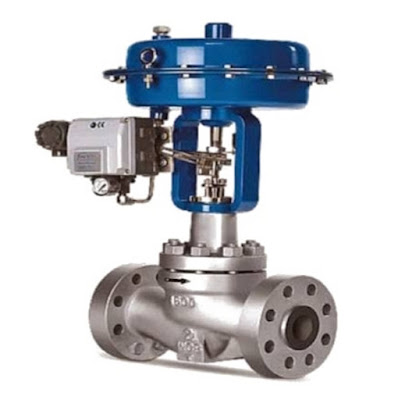Control Valves
Control Valves
A control valve is a valve and basically a control valve is used to control the fluid flow by changing the shape of the valve. And is basically the final control element known as the control valve and is used to regulate or control the fluid flow of the pipe or flow channel. and controls or regulates fluid pressure, temperature, and fluid volume.A control valve is a power operated instrument and basically a control valve controls the fluid flow rate in a process control system.
Basics of Control Valves
Valves are used for thousands of purposes, from simple and mundane tasks like turning on the water in a kitchen sink to important and difficult tasks like controlling the flow of water through a nuclear reactor. Valves are basically important for controlling the flow of liquids and gases in daily life.
Some valves are used to isolate the system, shut off system pressure, and/or for vacuum maintenance and repair. Others are used to reverse or throttle the flow in the system.
Control Valve Working
A control valve is used to control fluid flow by opening a valve and closing an internal passage. And basically this work is done automatically using electrical, hydraulic and pneumatic actuators. The main parts of a control valve are valve actuator, valve positioner and valve body.A control valve consists of three main parts with each part existing in several types and designs
- Control valve actuator
- Control valve position
- Control valve body
Valve Actuator
Valve actuators are basically used to open and close valves, and common actuators are used for gas pressure, hydraulic pressure, and electricity to open valves. Valve actuators are basically used for manual power, electrical power, hydraulic power and pneumatic power, and basically manual power is used for gear, chain wheel and lever. And the actuator is an open or closed valve, basically the old actuator is a fully open or fully closed valve but modern valves provide medium position with high precision. Also the actuator is operated remotely.Valve actuators are generally divided into five types, the first is the manual actuator, the second is the pneumatic actuator, the third is the hydraulic actuator, the next is the electric actuator, and the fifth is the spring actuator.
Valve Positioner
Valve positioner is a device which is used in control valve and basically works to increase or decrease the air load to correct the position valve and basically valve positioner is four types first pneumatic valve positioner, second electronic valve positioner, third electro pneumatic valve positioner and fourth digital There is a valve positioner.Valve Body
The valve body is divided into several categories and the valve body is based on the control valve working or the work of the control valve. Common categories of control valves are angle valves, angle set piston valves, globe valves, diaphragm valves, rotary valves, sliding cylinder valves, and air operated valves.Control valve action
Basically control valve action is of two types first is air to close and second is air to open.
Control valve Accessories
Basically control valve uses various types of accessories like pneumatic positioner, I/P transducer, volume booster, position transmitter, limit switch, solenoid valve, air lock relay and handwheel and all these accessories are useful for control valve and provide smooth and efficient operation. does Helps optimize performance.Control valve accessories have the following advantages:
- Control valve accessories improve process control
- Control valve accessories provide added safety
- Control valve accessories improve control valve performance and also provide greater speed of response
- Control valve accessories reduce valve problems
Why use a control valve?
A process plant consists of hundreds or thousands of control loops.
Each of these control loops controls some critical process variable such as pressure, flow, level, temperature, etc. is designed to maintain and basically determines the operating range required to ensure the quality of the final product. Each of these loops receives and generates internal disturbances that have a detrimental effect on the process variable, and interactions between other loops in the network provide disturbances that affect the process variable. And to reduce the effect of load disturbances, sensors and transmitters collect information about the process variable.
The controller then processes this information and decides what to do to get the process variable back to where it should be after a load disturbance.

Comments
Post a Comment